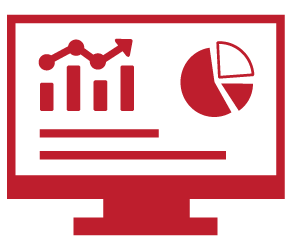CAPITALIST TOOL.
Business Intelligence (BI) consultancy plays a crucial role in the success and growth of a business. BI consultants possess expertise in analyzing data, extracting insights, and providing strategic guidance to organizations. BI consultancy brings expertise in data analysis, strategic decision-making, and market intelligence, enabling businesses to unlock the full potential of their data. By leveraging BI solutions, businesses can gain a competitive advantage, improve operational efficiency, understand customer needs, plan for the future, and adhere to data governance standards. It empowers businesses to make data-driven decisions that drive growth, profitability, and long-term success(Data-driven Decision Making, Competitive Advantage, Improved Operational Efficiency, Customer Insights and Personalization, Forecasting and Planning, Data Governance and Compliance).
HOW ITS DONE
Financial Reporting
It involves the generation and analysis of financial data to provide accurate and timely reports that aid in financial decision-making. This phase focuses on leveraging BI tools and techniques to extract insights from financial data and present it in a clear and meaningful way. Businesses can gain a comprehensive understanding of their financial performance, identify areas of improvement, and make data-driven decisions. Accurate and timely financial reports enable stakeholders to assess profitability, cash flow, and financial stability, supporting effective financial management and strategic planning.
Analytical Application
It focuses on developing and implementing data-driven applications that enable businesses to gain valuable insights and make informed decisions. This phase involves leveraging advanced analytics techniques, tools, and technologies to extract actionable intelligence from large and complex datasets. (Requirement Analysis, Data Integration, Data Exploration and Visualization, Performance Monitoring).
These applications empower users at all levels to explore data, identify trends, detect anomalies, and make data-driven decisions that lead to improved business performance and competitive advantage.
Data Mining
The application of advanced analytical techniques to extract valuable insights and patterns from large datasets. This phase focuses on uncovering hidden knowledge and relationships within the data to support decision-making and drive business success. It enables businesses to leverage their data assets to gain valuable insights and make data-driven decisions. By discovering patterns, relationships, and trends within the data organizations can optimize operations, improve customer experiences, identify market opportunities, and mitigate risks. Effective data mining empowers businesses to uncover valuable knowledge that can drive competitive advantage and business growth.
Budgeting And Planning
This phase involves the use of business intelligence tools and techniques to develop accurate forecasts, set financial targets, and align budgets with strategic goals. (Scenario Planning and What-If Analysis, Budget Development and Allocation, Accountability). It enables organizations to make informed financial decisions and allocate resources effectively. By leveraging data-driven insights, businesses can set realistic targets, align budgets with strategic goals, and proactively respond to changes in the market. This phase helps improve financial performance, optimize resource utilization, and enhance overall organizational efficiency.
Conslidation
It involves combining and integrating data from multiple sources or business units to provide a unified view of the organization’s performance. This phase focuses on streamlining data consolidation processes, ensuring data accuracy and consistency, and enabling effective analysis and reporting. It helps to organizations streamline their data integration processes and obtain a consolidated view of their operations. By consolidating data from various sources, businesses can gain a holistic understanding of their performance, identify trends and make informed decisions.
Metrics Management
It focuses on defining, tracking, and managing key performance metrics or indicators that align with the organization’s strategic objectives. This phase involves establishing a framework for metric selection, implementing performance measurement systems and providing actionable insights for decision-making. It provides a framework for aligning performance measurement with strategic goals, driving accountability and facilitating data-driven decision-making. By effectively managing metrics organizations can monitor progress identify areas for improvement and make informed adjustments to achieve desired outcomes and drive continuous improvement.
Dashboards And Scorecards
It involves designing and implementing visual tools and frameworks to present key performance indicators (KPIs) and relevant business information in a concise and interactive manner. This phase focuses on providing stakeholders with a comprehensive and real-time view of organizational performance to support decision-making and drive business success. (Requirements Gathering, Design and Layout, Data Integration, Real-Time Data Updates, Performance Monitoring and Analysis).
It enhances decision-making capabilities by presenting critical metrics and insights in a clear, concise, and visually appealing manner.
Operational Reporting
It focuses on providing timely and accurate reports that address the day-to-day operational needs of an organization. This phase involves generating and delivering routine reports that capture key operational metrics and performance indicators, enabling stakeholders to monitor and manage ongoing activities effectively. By providing routine reports that capture key operational metrics and performance indicators, organizations can monitor operational activities, identify bottlenecks, and make data-driven decisions to improve efficiency, productivity, and overall operational performance.
THE PROCESS

REQUIREMENTS ELICITATION
- Business Understanding
- Functional And Non-Functional Requirements
- Reporting And Visualization
- Integration And Deployment
- Training

DEVELOPMENT AND TESTING
- Solution Design
- Data Extraction And Transformation
- Etl Development
- Report And Dashboard Development
- Testing And Quality Assurance
- Deployment And User Training

SUPPORT AND MAINTENANCE
- System Monitoring
- Issue Resolution
- Data Quality Management
- Security And Access Control
- User Support And Training
LET’S COLLABORATE
